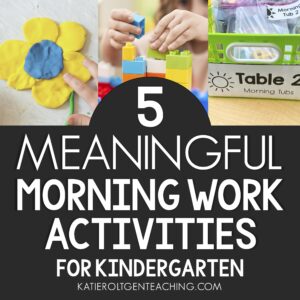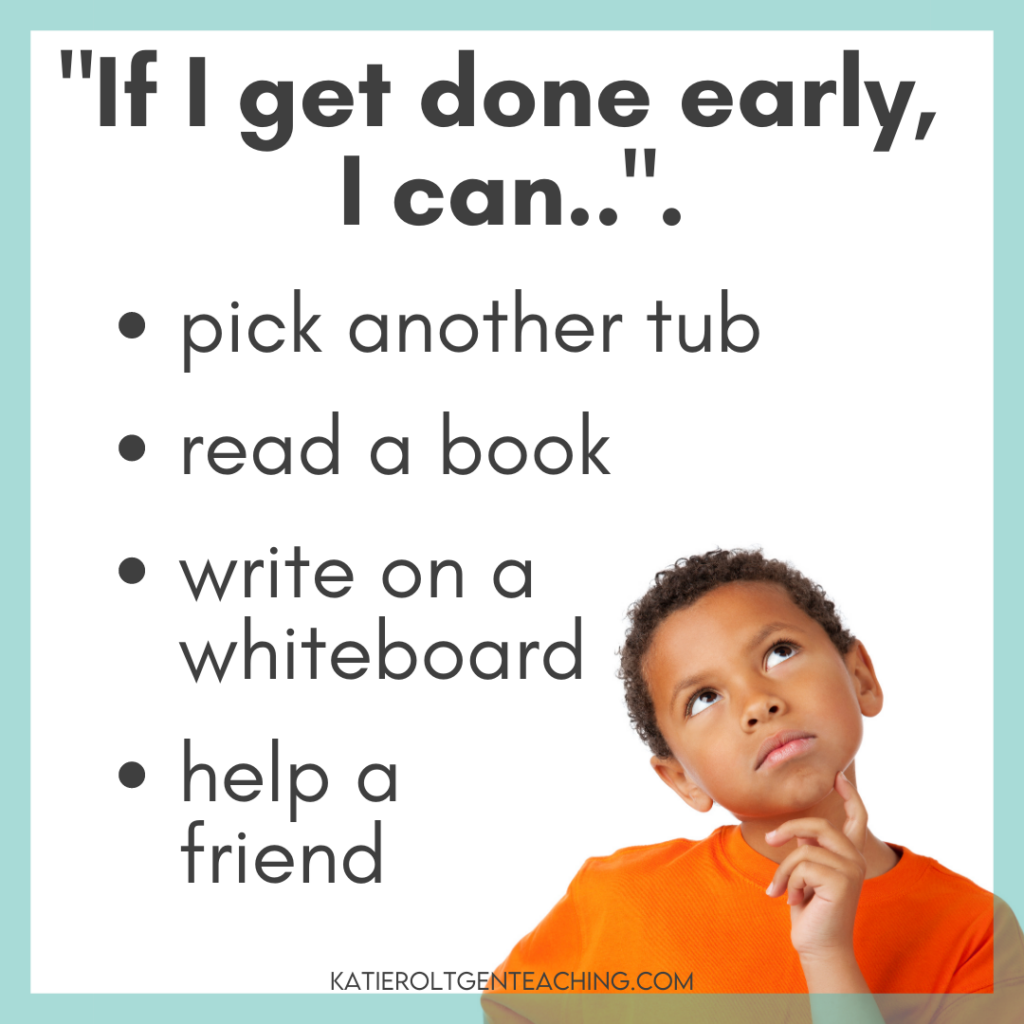
Menu
It’s the sixth and final part of my Morning Tubs Blog Series!
(If you would like to go back and read any of the previous posts, I’ll link them below!)
Today, I’m sharing about ways to promote student independence with morning tub activities. This is a really important topic and even though we’re talking about it last, it’s the glue that holds the success of morning tubs together.
One of the most common reasons for implementing morning tubs is to give students meaningful activities to complete independently while we teachers take care of everything that typically goes on at the beginning of the school day. We have so many things to do in a short amount of time, including welcoming students, answering questions, taking attendance, checking folders, and so on. Morning tubs must be independent work for students in order for them to be worth all of the time and prep needed to put them together.
Here are a few important tips to keep in mind as you implement tubs in your classroom.
The key part of this is “before starting tubs”, which means that there’s a 99.99% chance you aren’t going to be using morning tubs on your first -or even second- day of school.
This is a good thing.
The first few days of school (especially in Kindergarten) are so busy, no matter how well-planned and rehearsed you are. Spend your first few days of school setting up (and practicing) school-wide and classroom expectations. Once you’ve taken the time to do these very important steps, you can begin thinking about introducing classroom routines, including morning tubs.
Spend a few days talking about morning tubs – where they’re stored, when you’ll use them, how to put them away, etc. Lay the foundation for your students instead of asking them to dive right in.
When you and your students have started talking about morning tub expectations, be sure to model the behavior you expect from your students. This includes:
*How to choose a tub
*Walking safely with a tub
*Taking materials out
*Completing an activity
*Putting the tub away correctly
*What to do when they’re done
While you’re modeling all of the correct ways to use tubs, throw in a couple mistakes as well. For example, put the tub away in the wrong spot. If your students are anything like mine, they will get a kick out of seeing their teacher showing the wrong ways of doing something! 🙂

You know what they say – practice makes perfect. And although we don’t always have perfection, we should still practice! One idea for practicing tubs is to go very basic and only use things like playdough, puzzles, and manipulatives for the first week of tubs. This lets students focus more on the procedural aspect of morning tubs without having to also focus on doing a specific activity.
Many of us use playdough and manipulatives for simple lessons during the first couple weeks of school anyway, so try adding them to your tubs!
Have a clear plan for what students will do if they finish a tub early. Trust me – it will happen! Here are a few ideas:

Here are a few other things that you’ll want to consider:
Just like establishing any other routine in your classroom, taking time to model and practice using morning tubs will help your students feel more independent and confident. You’ll love the busy hum of your classroom as your students are completing activities that motivate them and help them grow!
1. Remember that you can get my Morning Tubs Planning Guide delivered instantly to your inbox by filling out the form below!
2. Join my Morning Tubs with Katie Roltgen Group on Facebook for tips, support, and collaboration with thousands of other teachers!
3. Since this is the final post in my morning tubs blog series, be sure to go back and catch up on anything you missed! Here are links to the previous posts: